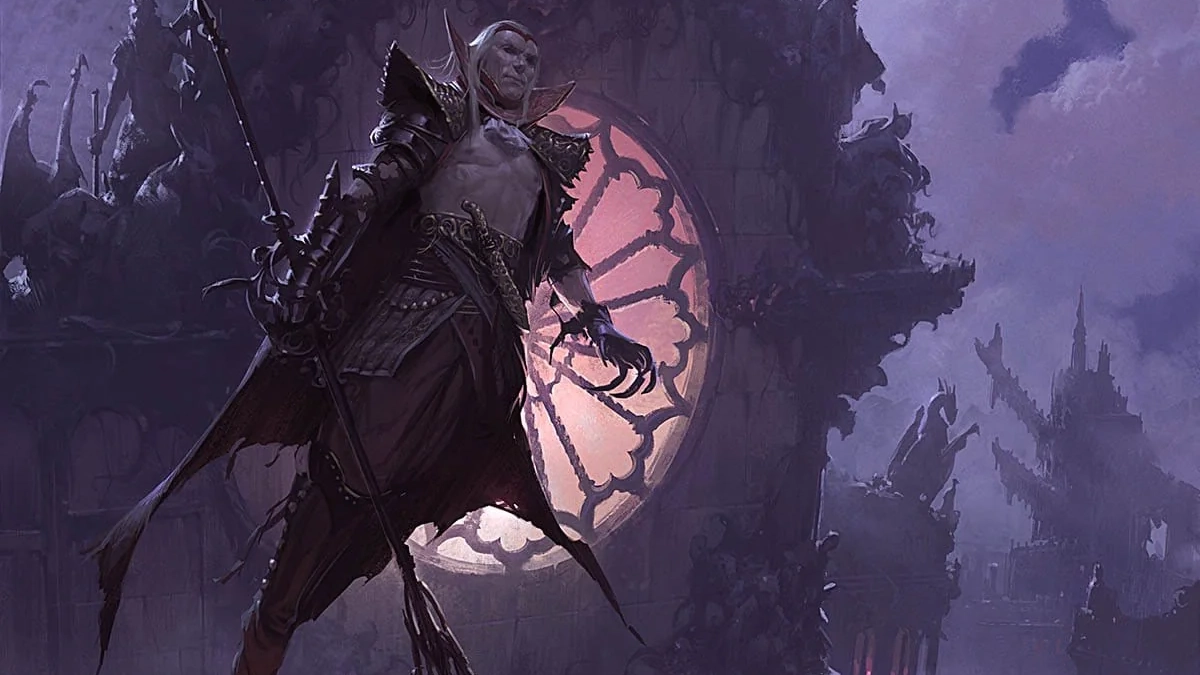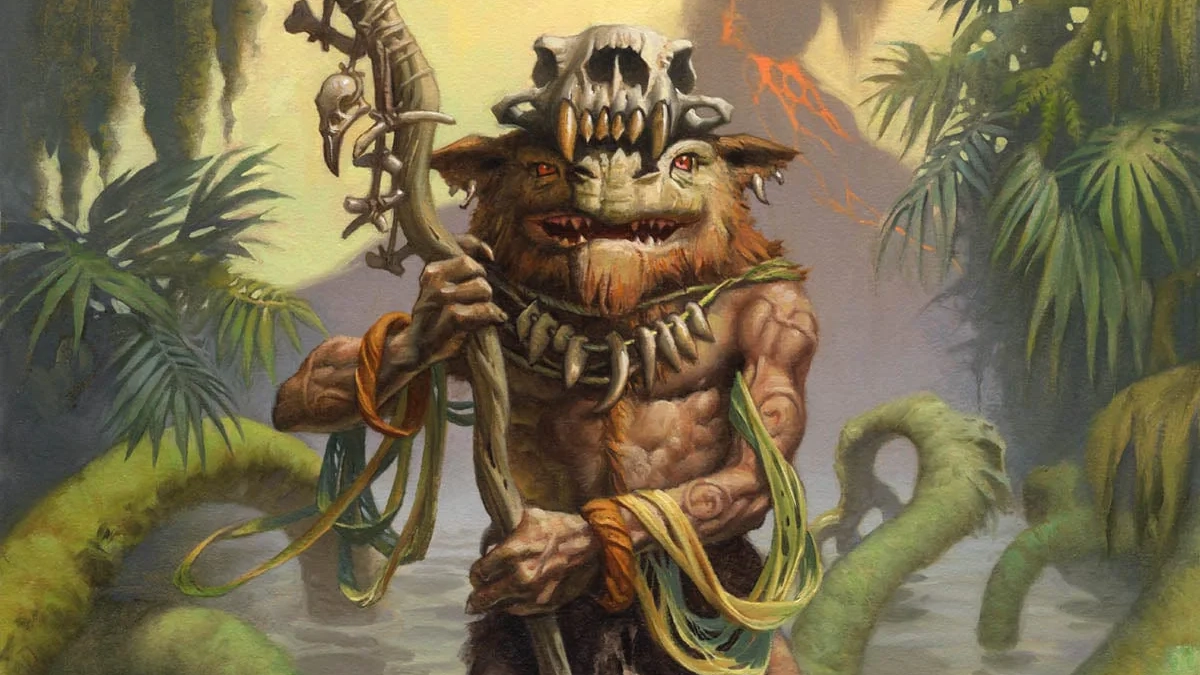How to Draft a Deck
I’ve never liked tier lists or pick orders. I think they distract from what you should be thinking about when you’re drafting, which is your game plan. I do love 17lands data, but mostly to help with early picks, figuring out whether a card I don’t have a lot of experience with is fundamentally powerful, or figuring out which of two cards that have a very similar function tends to perform better. I also like studying the data as an exercise in data science and trying to make sense of unexpected numbers, but I don’t think drafting by winrates is a good strategy.
Sometimes when I’m struggling with a format I try to lean on the data a little more to help figure out what I might be doing wrong, but I think this usually hurts my performance more than it helps in the mid to long term. The problem is when you draft cards based on tier lists or win rates instead of their function and the needs of your deck, you can lose sight of your game plan.
I think one of my biggest strengths as a player is my strategic approach to my games – I’m much better at role assessment and figuring out what the long game is going to look like than perfectly tight tactical play. For me, I start thinking about this from my first pick of a draft.

After I take a single card, I’m thinking about what kinds of games that card wants to play – does this card perform better in long games or short games, big games or small games, does the kind of game it wants to play lend itself to playing a deck with more colors or fewer colors, how flexible is this card, how attached to this card am I, how much stronger is this card in the decks that it’s best in than the decks that it’s worst in, is this a good card to splash, etc.
Does this card perform better in long games? Expensive cards typically play better in long games because you need time to cast them and then time for them to do whatever they do. Cards that draw cards tend to perform better in long games because you only really need to draw cards if running out of cards is a possibility. Defensive creatures and removal spells play better in long games, in that they let you play a long game, but they’ll need support from cards that reward you for playing a long game.
Does this card perform better in short games? Aggressive creatures, burn spells, land destruction, bounce spells, soft counters
Does this card play better in big games? Cards that become stronger when you have a lot of something, cards that make all your things better, evasive creatures, any sort of mana sink
Does this card play better in small games? Any kind of card advantage, any very high-impact creatures, any sort of persistent engine
Does this card lend itself to a deck with more colors? Expensive cards with few colored mana symbols in the casting cost, defensive cards, card selection, long game cards generally
Does this card lend itself to a deck with fewer colors? Cards with intense color requirements and aggressive cards want fewer colors
How flexible is this card? Most really strong cards are flexible in that any deck would be happy to play them, but for some cards, like Sunfall, they’ll play a lot better in some strategies than others. A card that is very strong but only in a certain kind of strategy will lead to the least flexible draft, as it’ll be a large incentive to play that strategy, while a weaker card that only works in that strategy might not be flexible itself, but you might still want to be flexible while you’re drafting because you can just not play the card.
I suppose that kind of touches on the question of attachment – how attached am I to this card? Will you lose much value if you don’t play it? You need to consider both how flexible a card is and how strong the card is to process how much total pull a card has toward a particular strategy, which will inform how flexible you should be in your next picks.
The rest of the questions are all basically related to that same question, which I see as pretty fundamental – how strongly you want to commit and each stage of the draft to leaning into a particular strategy or color or archetype, which is a question of how much better your cards are there to understand the advantage of staying vs the cost of changing lanes.
As I have more cards, I’m still thinking about what sort of game those cards collectively are looking for, as well as whether that kind of game is one I think I want to be playing in the format and how many of my cards I might have to abandon to pivot into a different plan, and would any of my cards potentially perform better with a different plan.
I think a lot of my best drafting happens in formats where I trust my intuition and don’t trust data or other people’s experience with cards and just make sure that my deck works the way I imagine I want it to.

A great example of this is when I draft decks that can loop themselves – meaning they have a way to return cards from their graveyard to their library such that as long as my opponent doesn’t disrupt that, I’ll never run out of cards. People wonder why I prioritize that so much, because even with these decks, in practice, I don’t end up needing to draw more than 40 cards most of the time, but that’s not the point, the point is how it allows me to approach the draft and my games strategically. Knowing my deck will have inevitability going long and the burden will never be on me to end a game lets me not put effort into figuring out how to end the game. Yes, I’ll probably end up pressuring most opponents at some point because creatures are an efficient way to answer other creatures and once you’re far enough ahead you might as well attack, but knowing that I don’t need to prioritize “finishers” lets me properly prioritize early interaction so that I can reliably get to the late game where losing is no longer possible.
I’m also always thinking about my curve from pick 1 (arguably even before that, as studying which points in the curve are heaviest for each color is one of the first things I pay attention to when studying a format before playing). It’s hard for a deck to fail because it has too many cheap cards, but very easy for a deck to fail because it has too many expensive cards. Picking up a single card that costs four or more mana early will make me start thinking about avoiding other cards with the same cost.
I think a lot of players are taught from their first drafts to target different numbers of cards with certain kinds of functionality – I think there are even inserts in booster packs or prerelease kits or something that suggest that limited decks should have a certain number of creatures and a certain number of removal spells in general. I don’t think about my decks in those terms. If I have a lot of removal, I’ll generally try to prioritize cards that give me card advantage, if I don’t have a lot of removal, I’ll try to prioritize cards that play well in large games like combat tricks, evasive creatures, and cards that scale well with large numbers of creatures.
Your deck doesn’t need anything in particular just to be a deck, it needs cards to execute its game plan, and it will be a good deck if it can reliably execute a good game plan.
I’m trying to figure out what the best way to clarify this is – I feel like examples would help, but I’m not trying to contextualize this concept to a particular format. I so rarely have to discuss broad principles of limited, since my podcast focuses on a very particular archetype in a very particular format. I like that approach because I think it’s easiest to learn with concrete examples, but it can also be a little tricky to figure out how to translate lessons from one context to another.

Last night I drafted a pauper cube I’d never seen or played before. I’d been told it had no monarch cards and that blink wasn’t a supported archetype because it was too strong. So this draft was a good example of trying to draft a deck without context. I first picked Falkenrath Noble, which I think is a pretty flexible card with a high ceiling – it’s best if you’re making tokens or recurring your creatures, but it can work anywhere since it triggers off your opponent’s creatures. My next picks were Vulturous Aven and Desecrator Hag. I was concerned about having three cards that cost four mana at this point, but I thought the Aven would want the same thing as the Noble: cheap expendable creatures and the Hag plays well with sacrificing creatures, plus card advantage tends to be a priority in pauper cube because fewer cards run away with the game and more one for one exchanges.
The cube supported a variety of aggressive strategies, but it also had a lot of strong removal. I don’t enjoy playing hyper-aggressive decks in this kind of format, so I knew I’d be looking to play either a heavy synergy big game strategy, like something with tokens and sacrifice synergy. I never found cards that supported the big game strategy, so I prioritized early removal. Blue was open and strong card draw spells came around later than I’d expected, so I ended up pivoting into a very traditional control deck with a lot of two-mana counterspells and removal, good card draw, and a few creatures. I played Falkenrath Noble because gaining life was important, but cut both Vulturous Aven and Desecrator Hag because I didn’t have enough creatures and had cheaper sources of card advantage.
I suppose that kind of highlights the fact that even while you’re trying to draft around the cards you have, you need to not get too attached if the draft pulls you in a different direction, and even though I think those cards are strong in the format, they weren’t what my deck needed, so I cut them anyway. A lot of deckbuilding is about the cards you don’t play, when you ignore a generically powerful card because it doesn’t support your plan.
A related concept that maybe helps offer a way to think about thinking about your cards in terms of a game plan is sideboarding, typically people think about sideboarding, especially in limited as adding cards to your deck that lines up well against your opponent, but for me, sideboarding is about figuring out how I expect the game to play out, what I want my role to be, and adding cards that will allow me to execute that plan. Yes, sometimes my opponent has a bomb that will win the game if I can’t kill it and it has flying, so I bring in a Plummet, but most of sideboarding for me is thinking about how I want to adjust my curve–if neither of us is good at pressuring the other and the board gets clogged early, I want to cut my small creatures that don’t break through and add expensive creatures in my sideboard that will give me an advantage when we reach the late game. If my opponent has a lot of 3/1s and 4/2s, I’d want to cut 3/3s and replace them with 2/2s because either card will trade with my opponent’s creatures, so I want the ones that cost less mana.
When you're drafting, you don’t know exactly what your opponent’s doing, but if you know the format, you know the kinds of things your opponents collectively will be doing and you can plan for how you expect your deck to play against them and what tools you’ll need to accomplish that.
Incidentally, this is where drafting with a strategy preference can make things a lot easier. If you figure out that you generally like to try to win on card advantage, on inevitability, or aggression, you can start to learn what kinds of strategies in the format that plan can struggle with and figure out what cards the format offers that can allow you to overcome some of those struggles.
Ultimately you need to remember that you’re drafting decks, not cards, and the earlier you start thinking about what your decks game plan is and how to draft toward that, the more focused your deck will be, synergy in a draft deck shouldn’t just be about how two of your cards play together, it should be about how all of your cards play together, and what matters isn’t so much that your cards make each other better as that your cards do what you’re trying to do.



Comment
Join the conversation